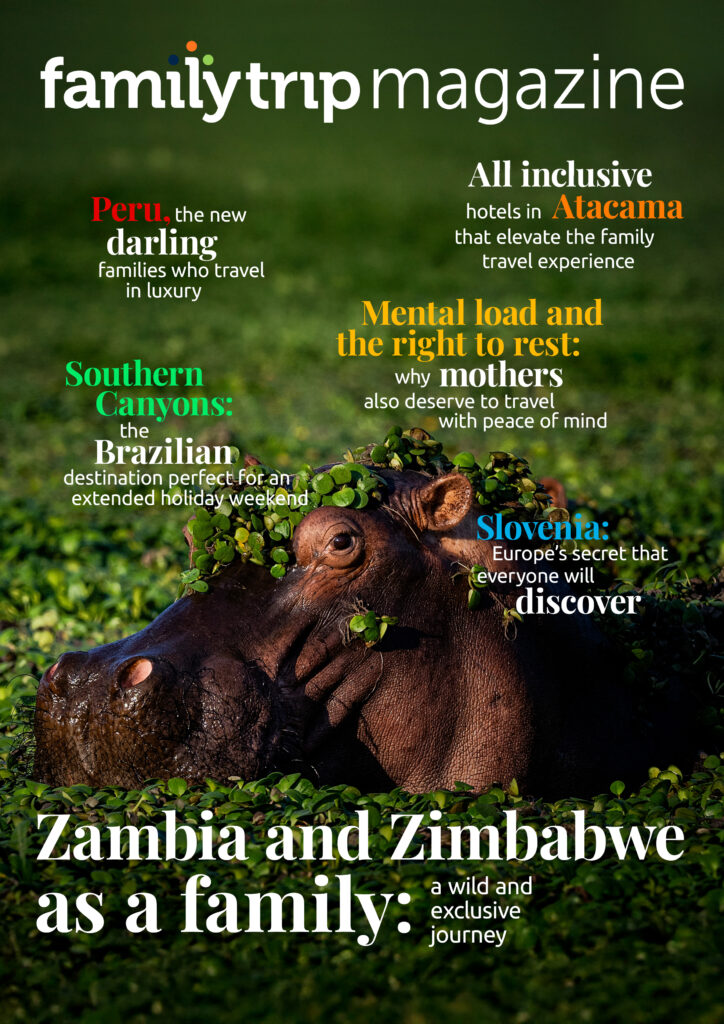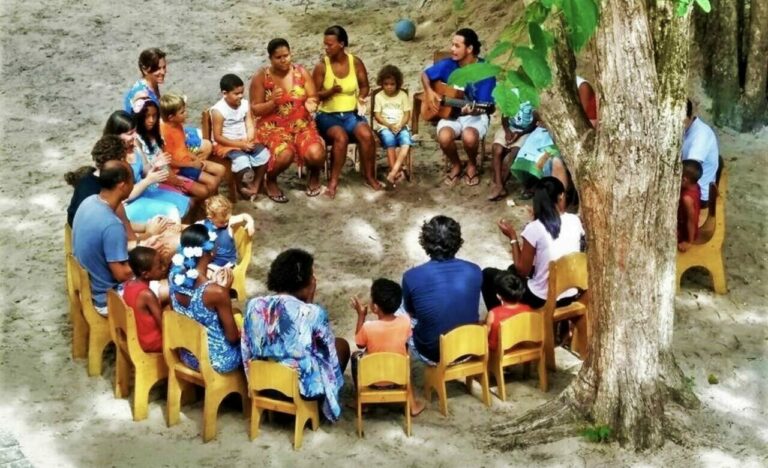
- Breaking from routine
Screen-free travel: how to create moments of presence and real family connection
Disconnecting from screens to connect with what really matters: presence, bonding, and family memories
By Gabriela Pisati Landi
In a world where life increasingly happens through screens — where conversations are interrupted by notifications, meals share space with videos, and landscapes are often seen only through phone cameras — traveling without screens becomes an almost revolutionary act. It is, above all, a gesture of care. Care for childhood, for bonds, and especially for time — that scarce and therefore precious commodity.
Taking a trip without depending on screens doesn’t mean denying technology, but rescuing the experience of being truly present. It’s allowing children (and adults too) to be enchanted by the sound of wind, the texture of sand, the smell of the forest, conversations around the table. It’s looking into eyes, laughing together, building memories that don’t need to be photographed to exist. And perhaps this is the greatest gift a trip can offer: the chance to live in the now.
As South Korean philosopher Byung-Chul Han reminds us in his book “In the Swarm,” we live in a time of hyperconnection and information excess, but with a scarcity of presence. “Those who live in a permanent state of dispersed attention lose the capacity for contemplation. And without contemplation, there is no depth.” A family trip, when planned with intention, can be precisely this counterpoint. A pause from excess. A reunion with the essential.
What really remains after a trip?
When we ask families about the most memorable moments from their travels, the answer rarely involves a perfect photo or viral video. What remains, almost always, are the sensory memories: that sunset everyone stopped to observe in silence, the unpretentious laughter after an unexpected situation, the trail where children invented games with stones and sticks, the picnic in the middle of a park, or that long conversation that only happened because, there, time was more gentle.
When traveling, giving up screens — even if just for a few hours a day — opens space for this type of experience. It allows imagination to occupy the algorithm’s place, active listening to take the space of accelerated audios, and the rhythm of nature or the city to be more important than the news feed.
How do screen-free travels impact children?
For children, who are in full developmental process, the absence (or reduction) of screens during travel creates space for developing competencies that don’t always fit in hyperconnected routines: observation, patience, listening, spontaneous curiosity, cooperation sense, and enchantment with the simple. Playing, exploring the unknown, asking questions, imagining stories — all of this flourishes when there’s space.
And this space is often offered by nature. As journalist and researcher Richard Louv argues in his book “Last Child in the Woods,” contact with natural environments functions almost like “green therapy,” awakening dormant senses, relieving stress, and returning to children (and adults too) the capacity to be enchanted with the real world. Louv proposes that we’re not just dealing with screen excess, but with a nature deficit — and that reconnecting with it is essential not only for well-being, but for children’s emotional, cognitive, and even social health.
When traveling, this reconnection becomes more possible. Being in a place where time is marked by bird sounds, by daylight variations, by the smell of wet earth, or by silence among trees, creates a kind of decompression. And when this happens, screens lose their power. Because what presents itself before the eyes is more interesting, more alive, more real. And, more than that: truly shareable — in the here and now, with those nearby.
Destinations that favor presence (but only make sense with the right curation)
Places that offer contact with nature, sensory cultural experiences, and breathing spaces favor this type of travel. It’s that trail in Patagonia that invites contemplation. It’s the Amazon, where cell phone signal gives way to bird and water sounds. It’s the Sacred Valley in Peru, where walking through markets and ancestral ruins instigates curiosity and dialogue. It’s also a quiet morning in Paris, trading the line at a crowded museum for a picnic in Luxembourg Gardens, with time to observe, talk, and play.
But it’s not just about choosing “disconnected” destinations. What transforms the experience isn’t just the place, but how the trip is conceived. And this is where curation makes all the difference. A well-planned itinerary that respects childhood’s rhythm and offers genuine pauses favors this state of presence — whether in nature or in cities.

Presence: the luxury of our times
French philosopher Frédéric Lenoir, reflecting on happiness and meaning, states that “there is no possible happiness without full presence in the lived instant.” And perhaps this is, in the end, the true luxury of a family trip today: being able to be. Being together. Being whole. Being attentive.
When we choose to live a trip this way, we’re not only offering children an enriching experience, but also teaching, in practice, that there are other ways to be in the world. That not everything needs to be shared, recorded, or performed. That sometimes, it’s enough to just live.
Because, in the end, what transcends time isn’t the stories, reels, or perfect photos. What remains are the conversations along the way, the smell of grass after rain, the laughter that echoes in the middle of a trail, and that tight hug after a whole day exploring the world — together, for real.
Things the Way Family love to pack in their suitcase:
Gate
Eletronics for the travel: smartphone, drone, câmera, charger,…
Destiny
UV clothes, bikinis, caps, diving goggles, snorkel mask and other accessories…

















